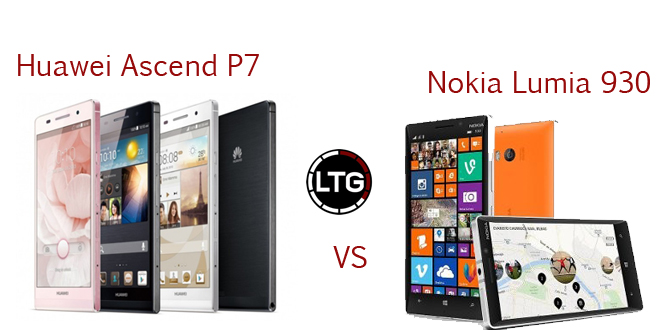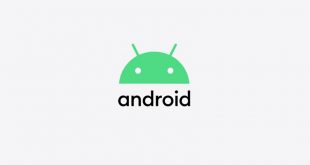Two upcoming underdogs will try to make a dent in the smartphone market, mainly the Nokia Lumia 930, a phone targeted at European markets, and the Huawei Ascend P7, an underdog with a considerable growl. Which one of these looks better at a first glance?
Nokia Lumia 930 – price $599 (€435)
The Nokia Lumia 930 is also an up-coming phone, set for release this June, benefiting from the new Windows Mobile 8.1. It’s the first Nokia flagship phone to be a serious competitor for some other high-end smartphones, and it seems Nokia means business this time around. a 5 inch display with 1920x1080p resolution, strong hardware featuring a 2.2 GHz quad-core CPU and 2 GB RAM are what the Lumia 930 brings to the table.
In addition, as we’re accustomed with Nokia smartphones, the Lumia 930 will feature an incredibly good camera of 20 MP, with enough features to actually turn the phone into a serious photographer’s tool. The only downside seems to be the OS, considering not many people are fans of Windows Mobile. Regardless, we see a strong phone in the Nokia Lumia 930, and at the $600 mark, it’s just affordable enough to raise interest.
- CPU – 2.2GHz quad-core CPU / Qualcomm Snapdragon 800 SoC
- GPU – Not yet confirmed
- DISPLAY – ClearBlack display, 1080 x 1920 pixels, 5.0 inches (~441 ppi pixel density) with AMOLED capacitive touchscreen
- MEMORY – 32 GB, 2 GB RAM, No card slot
- BATTERY – Non-removable 2,420 mAh battery and offers Qi wireless charging capability
- CAMERA – Primary camera 20 MP, 4992 х 3744 pixels, Carl Zeiss optics, optical image stabilization, autofocus, dual-LED flash; Secondary camera 1.2 MP, 720p
- VIDEO – 1080p@30fps, video light, stereo sound rec.
- BODY – 137 x 71 x 9.8 mm (5.39 x 2.80 x 0.39 in)
- WEIGHT – 167 g (5.89 oz)
- WIRELESS – Wi-Fi 802.11 a/b/g/n/ac, dual-band, DLNA, Wi-Fi hotspot
Huawei Ascend P7 – $573 (£350) estimated
Huawei isn’t considered to be a top brand yet, at least not in Europe and North America, although the phone manufacturer is popular in Asia. Despite this, Huawei is known to bring powerful hardware at an affordable price. The Ascend P7 is coming up in May, and aims to do just that. Hardware-wise, we’re going to see a powerful quad-core CPU clocked at 1.6 GHz combined with 2 GB of RAM. The likely resolution for the Ascend P7’s display will be 1920x1080p, with a 5 inch display. PPI is not yet known, but don’t expect anything extraordinary.
Unfortunately, the battery seems to be mediocre, and storage space isn’t great either, coming with 16 GB internal storage and up to 32 GB via microSD. That’s not a lot for a 2014 phone, especially since this time around, the Huawei Ascend P7 won’t be exactly cheap. With a price-tag of around $600 (or slightly less), the Ascend P7 will be competing with top-dogs such as the Samsung Galaxy S5 or the HTC One M8. That being said, a great 13 MP camera is to be included, and Android Kit Kat 4.4.2 is almost a given, which, combined with the Emotion UI 2.0 should provide for quality software.
- CPU – Quad-core 1.6 GHz / HiSilicon Balong 910 chipset
- GPU – Mali-450 MP
- DISPLAY – Emotion UI 2.0, IPS LCD capacitive touchscreen, 5.0″ TFT LCD display with IPS LCD capacitive touchscreen
- MEMORY – microSD, up to 32 GB, internal 16 GB, 2 GB RAM
- BATTERY – Non-removable 2460 mAh battery
- CAMERA – Primary camera 13 MP, 4160 x 3120 pixels, autofocus, LED flash; Secondary camera 8MP
- VIDEO – 1080p@30fps
- BODY – Not yet confirmed
- WEIGHT – 141 g (unofficial)
- WIRELESS – Wi-Fi 802.11 a/b/g/n, dual-band, DLNA, Wi-Fi Direct, Wi-Fi hotspot
Conclusions
The two upcoming phones will be at each others’ throats, no doubt. We’re keen to give the Nokia Lumia 930 the edge, based on build-quality, hardware and design. The camera in particular should give the phone the advantage of the Huawei Ascend P7, a phone that seems to drop the company’s traditional low-price mentality. Despite this, the Ascend P7 brings Android OS as an ace up the sleeve, and with an aluminium finish that looks rather good, it’s still bound to get some attention. We’ll have to review the two phones once they are out, but for now, it seems Nokia will be the winner of this duel.
 Load the Game Video Games, Reviews, Game News, Game Reviews & Game Video Trailers
Load the Game Video Games, Reviews, Game News, Game Reviews & Game Video Trailers



